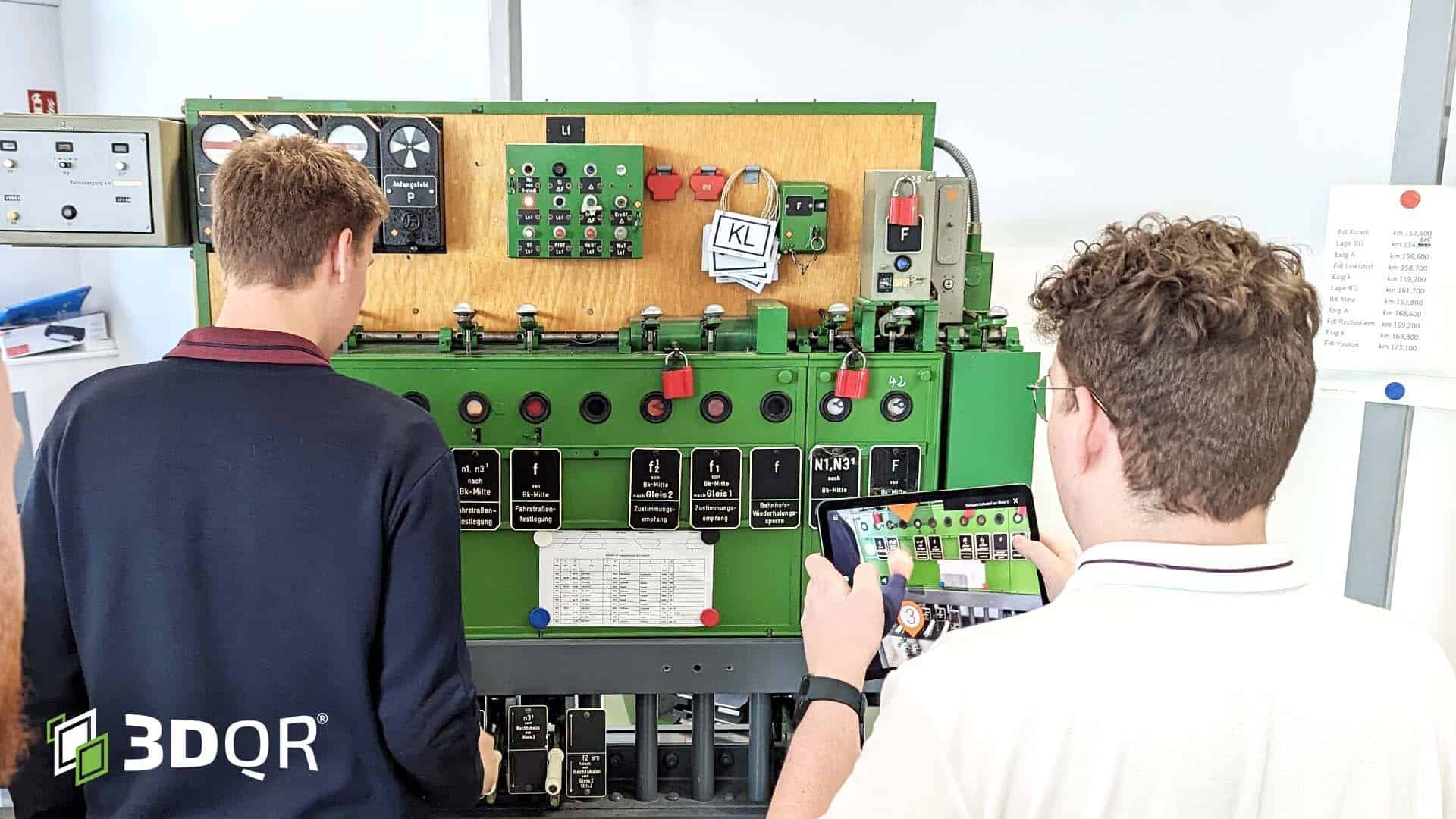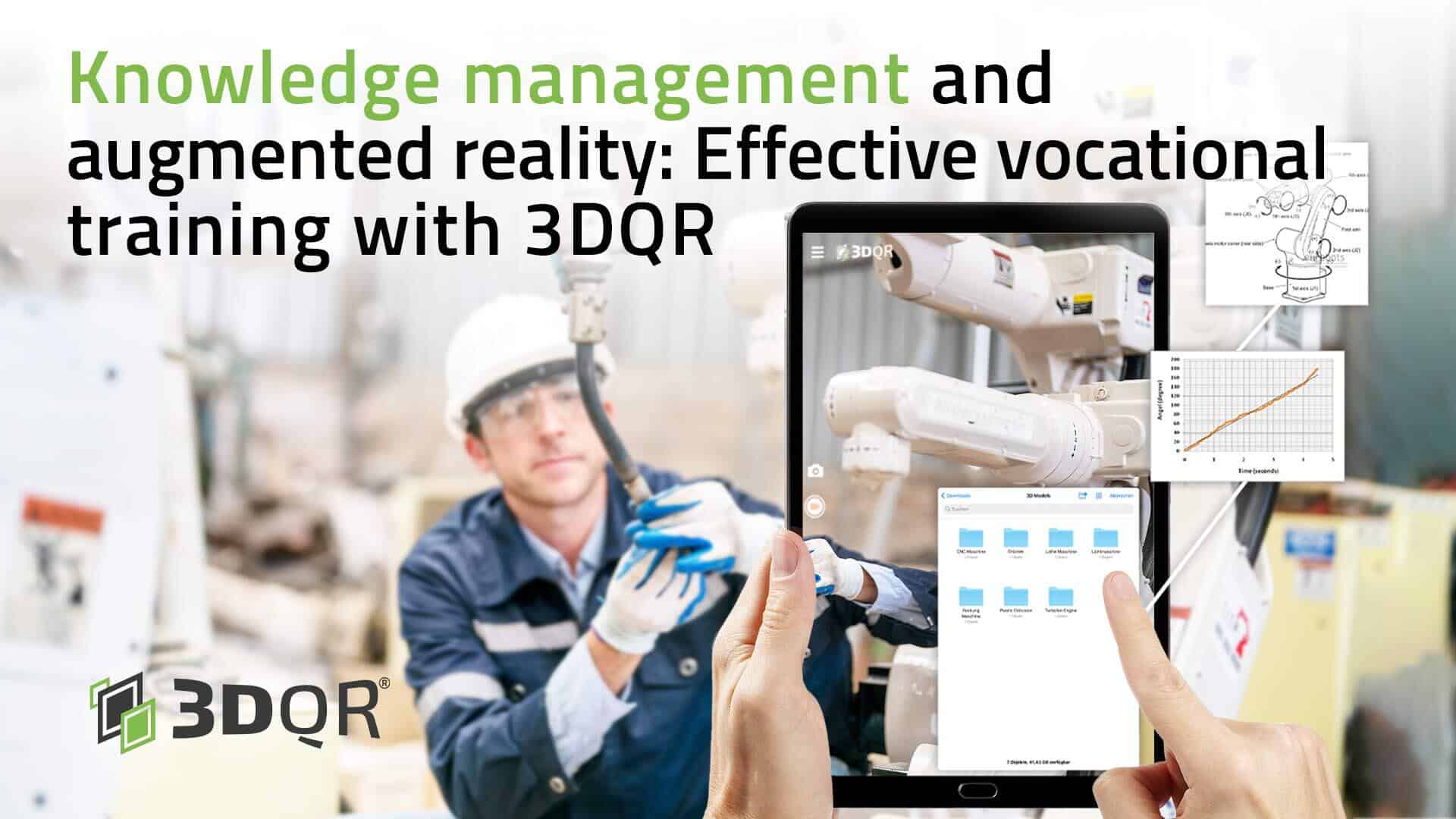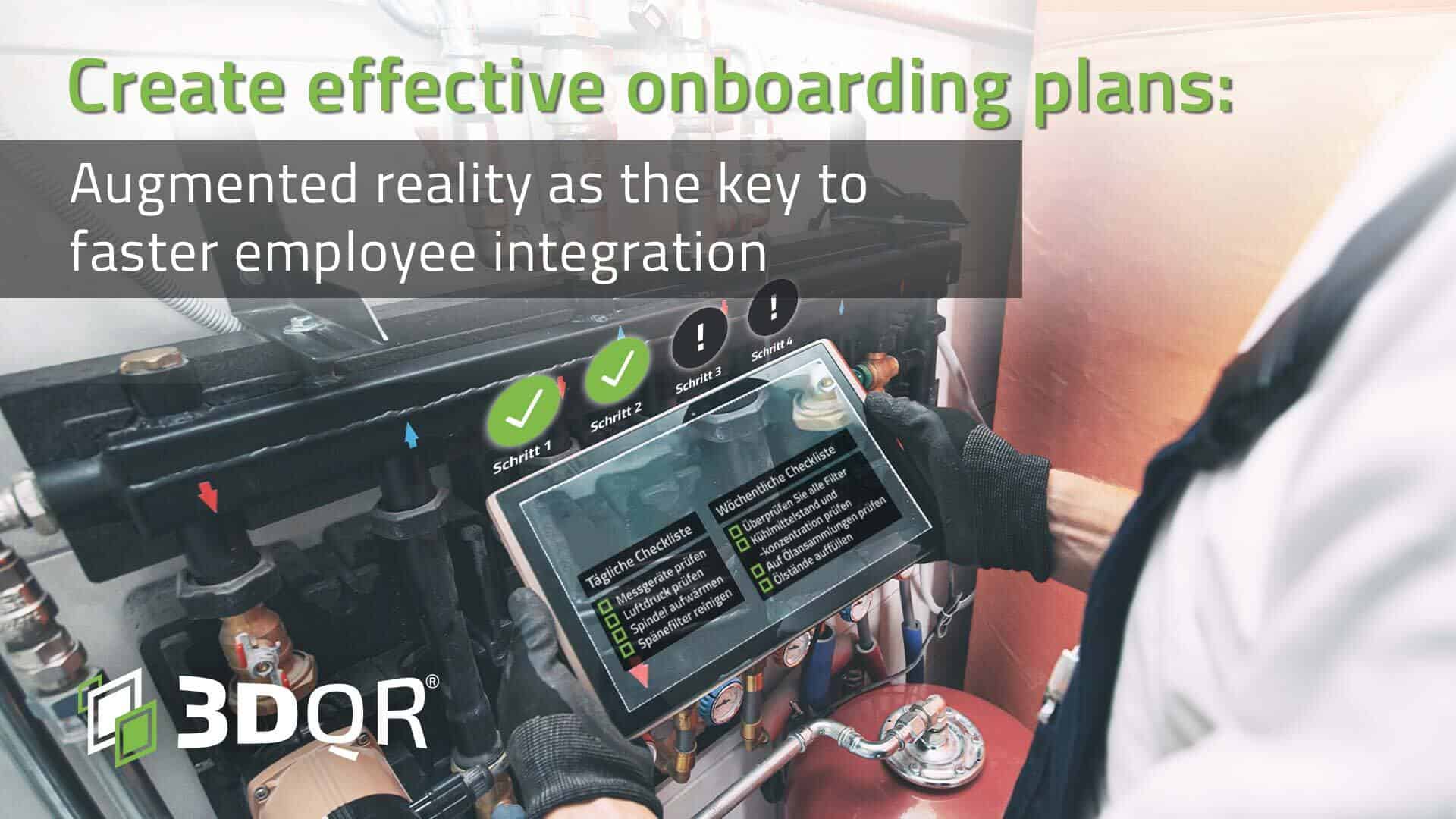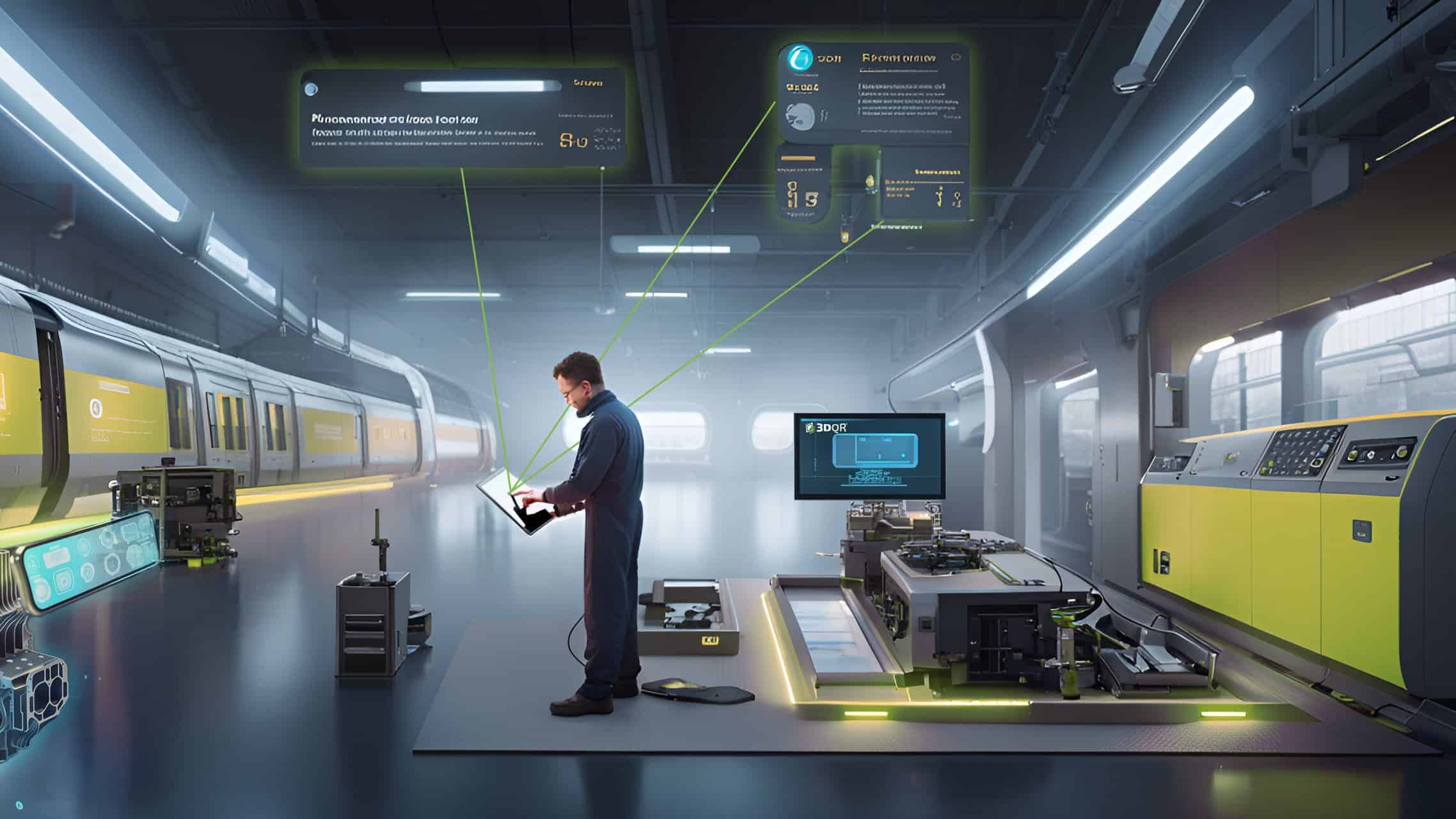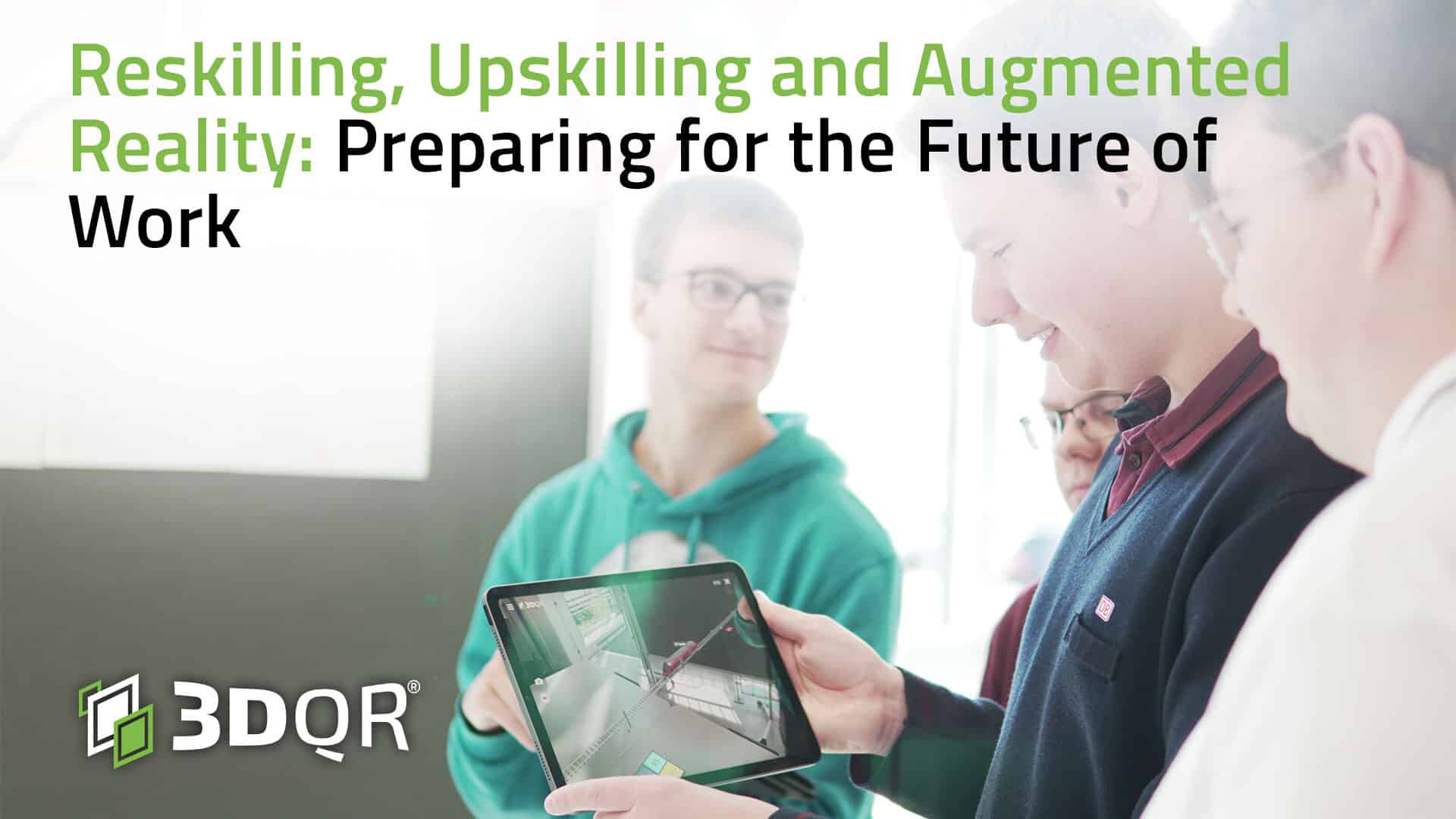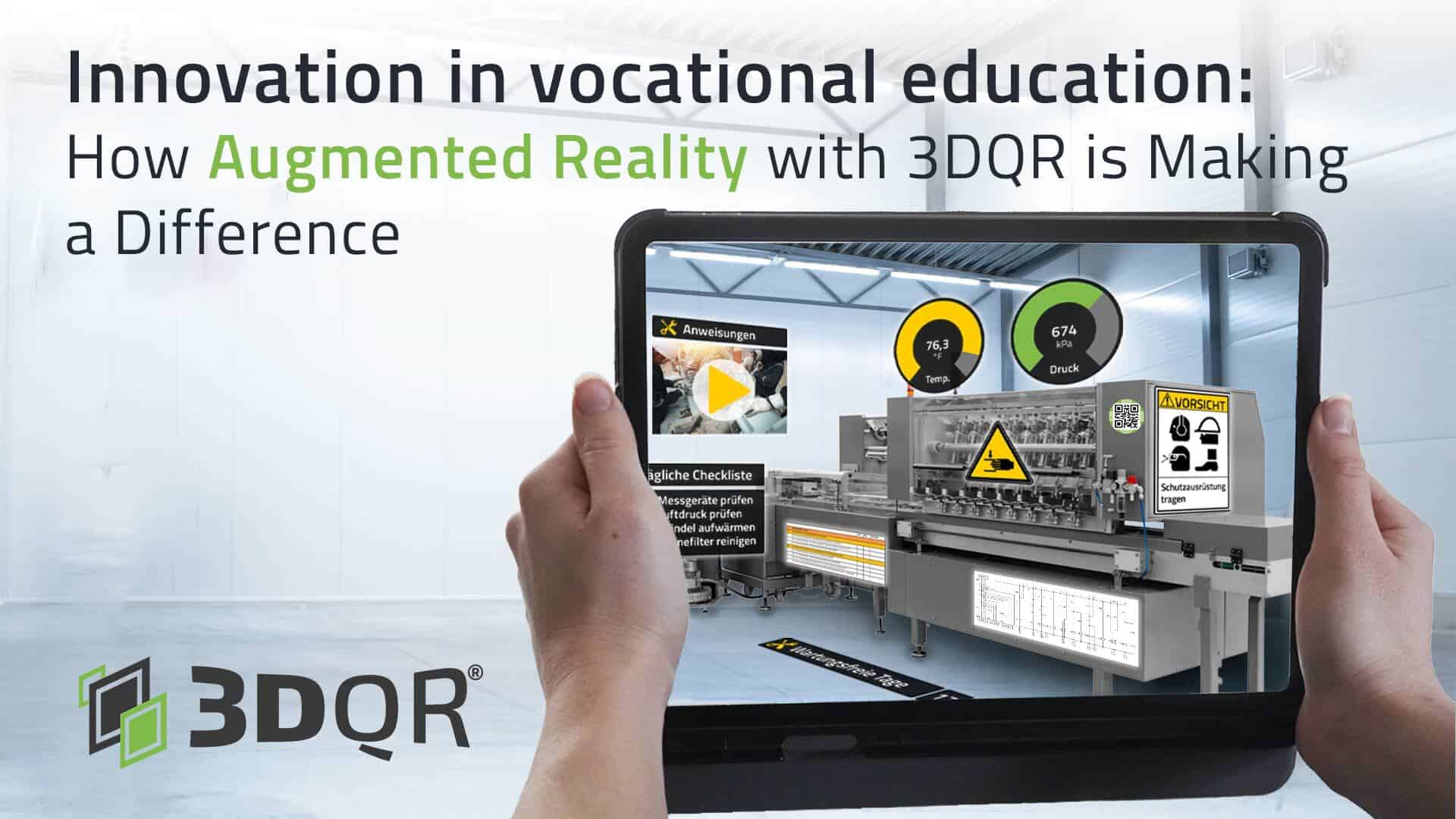Inhaltsverzeichnis
Effective onboarding plans for new employees are a crucial factor for a company’s success and satisfaction. It lays the foundation for successful collaboration and allows new employees to quickly find their role and team. Given the shortage of skilled workers and the increasing competition for qualified employees, it is now more important than ever to use efficient and innovative onboarding methods.
Augmented Reality (AR) is a technology that has the potential to significantly improve employee onboarding. By augmenting the real world with digital information, visualizations and interactions, AR applications can make the onboarding process more interactive, efficient, and engaging. In this blog post, we will explain the benefits of AR for effective onboarding plans and show how companies can successfully integrate this technology into their processes.
Challenges in Onboarding
Onboarding new employees is a complex process that poses challenges for both the company and the new employee. Some of the most common challenges are:
- Information overload: New employees often have to absorb a wealth of information in a short amount of time, which can lead to overwhelm and stress. This can make it difficult to remember important details and perform in the new role.
- Lack of practical relevance: The conveyance of theoretical knowledge alone is often insufficient to optimally prepare new employees for their tasks. Practical exercises and experiences are crucial for implementing the learned knowledge.
- Inefficient learning methods: Traditional onboarding methods such as studying manuals or lengthy presentations can be monotonous and impact the motivation of new employees. In addition, such methods are often not very effective when it comes to conveying complex knowledge or specific skills.
- Individual learning needs: Each employee has different learning needs, previous knowledge and learning types. A standardized onboarding plan cannot always meet these requirements and therefore cannot achieve the best possible learning results.
- Time and resource expenditure: The onboarding of new employees requires a significant amount of time for both the company and the new employee. Managers and colleagues need to schedule time for training, explanations and supervision, which can be a burden for the entire team.
Augmented Reality can help overcome these onboarding challenges and make the process effective for all parties involved.
Augmented Reality and Effective Onboarding Plans
Augmented Reality (AR) offers an innovative solution to tackle the challenges of onboarding new employees and make the process more effective. By integrating AR into onboarding plans, companies can benefit from the following advantages:
Interactive Learning: AR enables hands-on learning by integrating digital information and visualizations directly into the real environment. This promotes the understanding and application of newly acquired knowledge and improves learning outcomes.
Individual Pace: With AR, new employees can learn at their own pace and access information as needed. This allows for effective onboarding tailored to the needs of the individual employee.
Simplified Knowledge Transfer: AR can visualize complex information and processes simply and understandably, which facilitates learning and shortens the onboarding time.
Motivation and Engagement: The use of AR in onboarding makes the learning process more exciting and attractive, increasing the engagement of new employees.
Resource Conservation: By integrating AR into onboarding plans, companies can save time and resources, as less extensive training and supervision is required. AR applications can partially take over the role of mentors or trainers, thereby reducing the time investment for the entire team.
By integrating AR into their onboarding plans, companies can increase the efficiency of the onboarding process, reduce the time required, and ultimately increase the satisfaction and productivity of their new employees.
Steps to Implement AR into Onboarding Plans
The integration of Augmented Reality (AR) into onboarding plans can improve the onboarding process for new employees. Here are some steps companies can follow to successfully implement AR into their onboarding plans:
Needs Analysis: Before starting with the implementation of AR, analyze your company’s needs and requirements regarding the onboarding of new employees. Identify weaknesses and challenges in the current onboarding process and check how AR can address them.
Development of AR Content: Create engaging and informative AR content tailored to the specific learning goals and requirements of your new employees. These can be process visualizations, 3D models of machines or plants, as well as interactive instructions and checklists. Don’t reinvent the wheel, but use existing knowledge and consider where it is needed and how it can be presented appealingly.
Integration into Existing Onboarding Plans: Adjust your existing onboarding plans to integrate the new AR content and methods. Make sure that the use of AR complements and supports the learning process rather than replacing or hindering it.
Staff Training: Train the responsible trainers and supervisors in handling AR technology. Ensure they know how to use AR applications effectively to improve the onboarding process. 3DQ supports this process step by step with its training platform.
Assessment and Optimization: Regularly collect feedback from the involved employees and trainers to assess the success of AR integration into onboarding plans. Identify areas where improvements are needed and optimize the AR content and methods accordingly. Let the trainees extend the scenes with the in-app creator to continuously improve them and deepen the knowledge.
By integrating AR into onboarding plans, companies can make the onboarding process more effective and efficient by offering interactive learning methods tailored to the needs of each individual employee.
Conclusion
Augmented Reality offers a modern way to design effective onboarding plans. By integrating AR into the onboarding process, companies can overcome the challenges of traditional onboarding methods and shorten the onboarding time for new employees. Furthermore, the use of AR promotes the motivation and engagement of employees, as they can learn interactively and at their own pace.
Companies should first define their goals and requirements and then develop the necessary technologies and content step by step. Through continuous evaluation and adjustment of the AR-based onboarding plans, companies can ensure that they are always up to date with technology and achieve the best possible results.
Overall, Augmented Reality offers a promising future for the design of onboarding plans and the improvement of employee integration. Companies that opt for the use of AR technology can benefit from more efficient onboarding, happier employees and ultimately higher productivity. If you want to learn more, get in touch with us.
